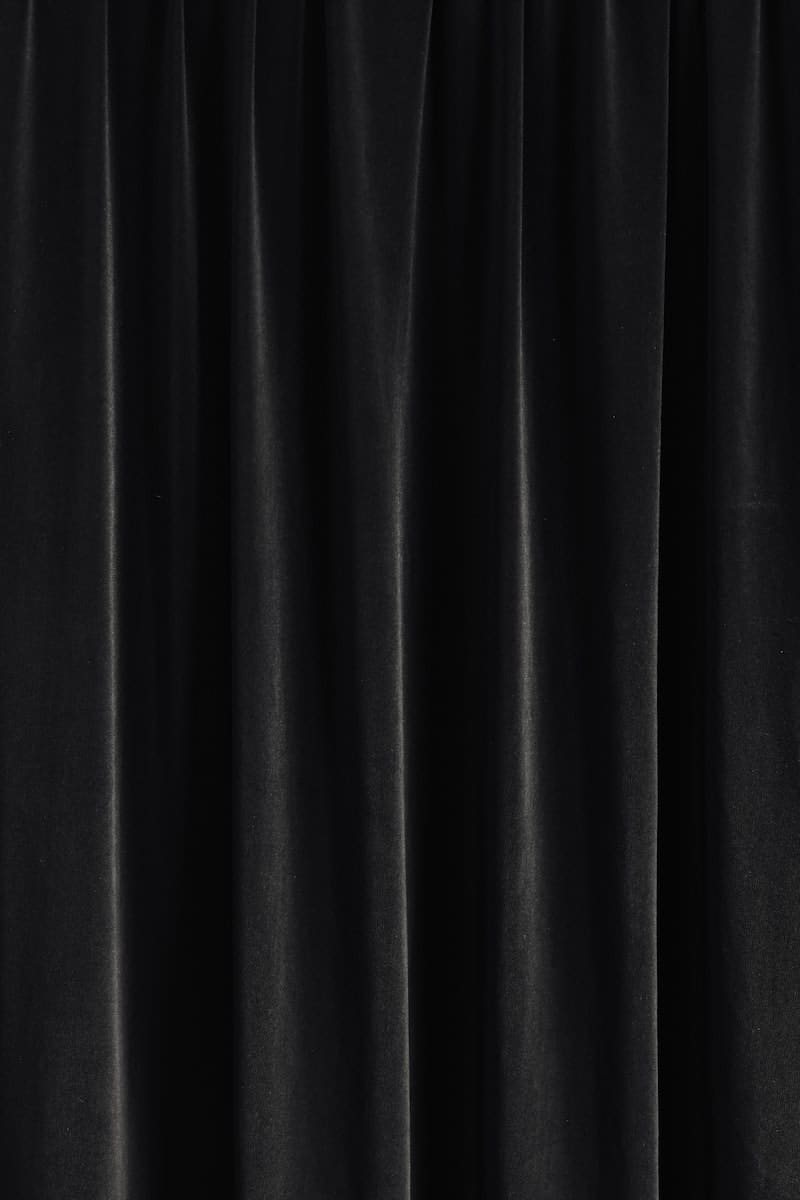
Blackout lining is a fabric material that blocks out light and noise, making your room darker and quieter. It can also help you save energy by keeping your room warmer in winter and cooler in summer. Blackout lining is ideal for bedrooms, nurseries, home theaters, or any room where you want to create a cozy and comfortable atmosphere.
But what if you already have curtains that you love, and you don’t want to buy new ones? Can you add blackout lining to your existing curtains? The answer is yes! You can easily attach blackout lining to your existing curtains with some simple sewing tools and techniques. In this guide, I’ll show you how to do it in 9 easy steps.
How do you add blackout lining to existing curtains?
To add blackout lining to existing curtains, you need to:
Here are the detailed instructions on how to add blackout lining to existing curtains:
Before you start working on your curtain, you need to remove it from the rod and clean it. This will ensure that your curtain is free of dust, dirt, stains, or wrinkles that might affect the final result. You can either wash your curtain by hand or machine, depending on the fabric type and care instructions. Make sure you dry your curtain completely before proceeding to the next step.
Next, you need to get the measurements of your curtain and cut the blackout fabric accordingly. You can use a measuring tape or a ruler to measure the width and length of your curtain panel. Then, add about 2 inches (5 cm) on each side for seam allowance. This will allow you to sew the blackout fabric to the back of your curtain without affecting its size or shape.
You can use a pair of scissors or a rotary cutter to cut the blackout fabric according to your measurements. Make sure you cut along a straight line and use a cutting mat or a large table to protect your surface.
Now that you have your blackout fabric ready, you need to pin it together with your curtain panel. Lay your curtain panel face down on a flat surface and place your blackout fabric on top of it, with the right sides facing each other. Align the edges of both fabrics and pin them together with sewing pins.
Then, sew along the edges of both fabrics using a sewing machine or a needle and thread. You can use a straight stitch or a zigzag stitch, depending on your preference. Leave about 1/2 inch (1 cm) seam allowance and make sure you leave an opening of about 6 inches (15 cm) at one end of the curtain panel. This will allow you to turn the fabric right side out later.
Once you have sewn both fabrics together, turn them right side out through the opening you left in step 3. Use your fingers or a blunt object like a chopstick to push out the corners and smooth out any wrinkles. Then, iron both fabrics with a low heat setting to make them flat and neat.
Next, you need to close the opening you left in step 3 and topstitch along the edges of both fabrics. To close the opening, fold both fabrics inward along the seam allowance and pin them together. Then, sew along the edge using a straight stitch or a slip stitch by hand.
To topstitch along the edges, sew along all four sides of both fabrics using a straight stitch or a decorative stitch. This will create a nice finish and prevent the fabrics from shifting or bunching up.
Depending on how you want to hang your curtains, you may need to add grommets or hooks to make them easier to hang. Grommets are metal rings that you can insert into the top of your curtain panel to create holes for the curtain rod. Hooks are metal clips that you can attach to the back of your curtain panel to hook onto the curtain rod.
To add grommets, you need to mark where you want to place them along the top of your curtain panel. You can use a measuring tape or a ruler to space them evenly and a pencil or a marker to mark the spots. Then, use a pair of scissors or a grommet tool to cut holes in both fabrics according to the size of your grommets. Insert the grommets into the holes and secure them with a hammer or a grommet tool.
To add hooks, you need to mark where you want to place them along the top of your curtain panel. You can use a measuring tape or a ruler to space them evenly and a pencil or a marker to mark the spots. Then, use a needle and thread or a sewing machine to sew the hooks onto the back of your curtain panel, making sure they are aligned with the marks.
Finally, you can hang your curtain again on your curtain rod. If you added grommets, simply slide them onto the rod and adjust them as needed. If you added hooks, hook them onto the rod and adjust them as needed.
Congratulations, you have successfully added blackout lining to your existing curtains! You can now enjoy your new blackout curtains and their benefits. They will block out light and noise, making your room darker and quieter. They will also help you save energy by keeping your room warmer in winter and cooler in summer.

Q: What are the benefits of adding blackout lining to existing curtains?
A: Adding blackout lining to existing curtains has many benefits, such as:
Q: What kind of fabric is blackout lining?
A: Blackout lining is a fabric material that has a special coating or layer that blocks out light and noise. It can be made of different types of fabrics, such as polyester, cotton, or silk. It can also come in different colors, weights, and textures, depending on your preference.
Q: Where can I buy blackout lining?
A: You can buy blackout lining from most fabric stores, online retailers, or home improvement stores. You can also buy ready-made blackout curtains that already have blackout lining attached to them.
Adding blackout lining to existing curtains is a simple and effective way to upgrade your curtains without having to buy new ones. It can also improve your comfort and well-being by creating a darker and quieter room for you. All you need are some basic sewing tools and techniques, and you can do it yourself in 9 easy steps.

Dale is the colorful mind behind HuetifulHomes.com, where he shows you how to create a home that is as fun and fabulous as you are. He has a passion for color and a knack for DIY, with years of interior design experience he shares his tips and tricks on how to create a home that reflects your personality and style. He believes that color is the key to happiness, and he wants to help you make your home more Huetiful.